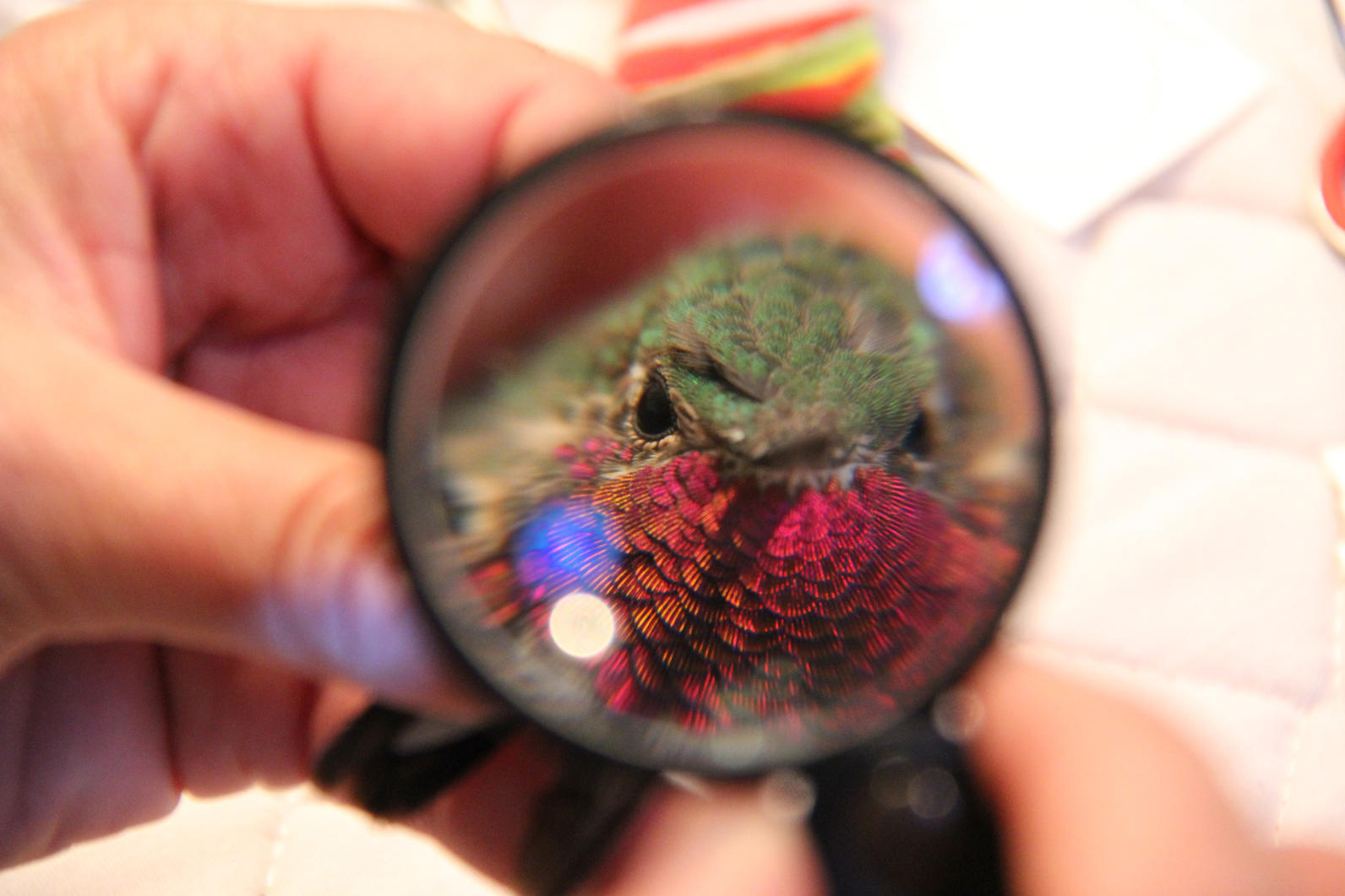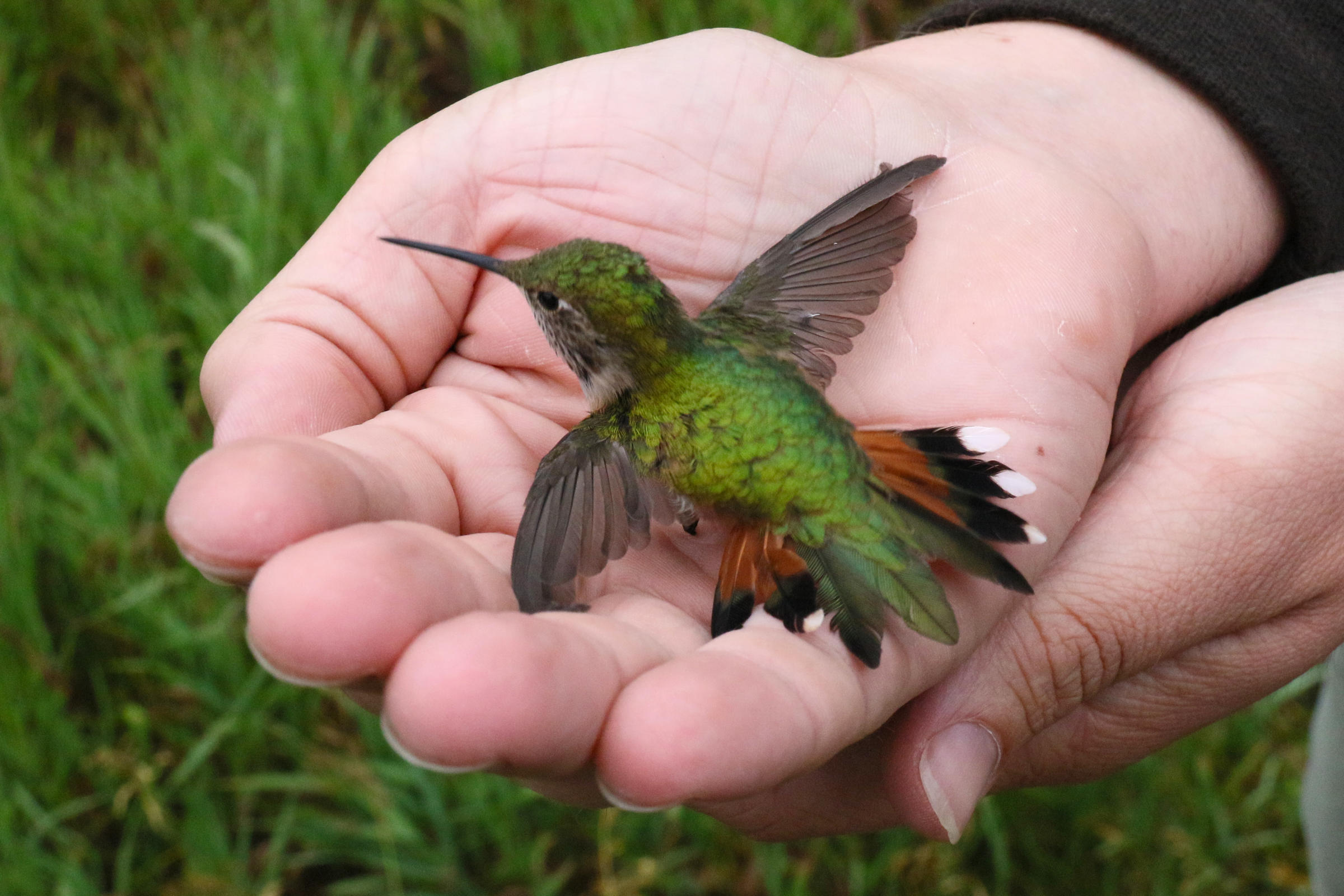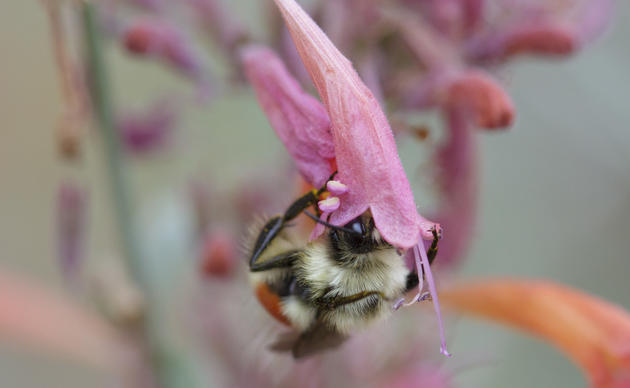By Brady Godwin
Over here in Laramie, we have started studying hummingbirds.
Last year I started my PhD with Dr. Holly Ernest, Professor of Wildlife Genomics and Disease Ecology at the University of Wyoming, who is a federally permitted hummingbird bander with years of hummingbird research experience. We study hummingbirds for many reasons. Two big reasons are related to the recent surge of interest in the state of pollinator species, such as bees and hummingbirds, and a growing movement of growing gardens with native plants (both of which I’m sure you Habitat Heroes know all about!). How do hummingbirds fit into the community of pollinators in the Rockies and, at the level of populations, how are they doing?

We believe that hummingbirds are excellent species to study because of their role as pollinators, their interactions with their environments, and their pure beauty and charisma. People love hummingbirds! I’ve found that someone who has little interest in bees, plants, or even birds in general can’t help but marvel at the flight and precious beauty of hummingbirds. They provide a magnificent everyday link to nature, and can help bring people to truly care about conservation.
Because hummingbirds are so important, we should try to know everything we can about them. However, it turns out there’s a lot we don’t really know! There are data on hummingbird arrival dates, migration routes, and breeding times, for example, but much of the basic biology of their populations remains unknown. This can largely be explained by the fact that licensed hummingbird banders are relatively few and far between. Up until now, we couldn’t do very good capture-recapture studies to estimate population numbers because so few birds are banded. We don’t have a good idea of diseases or environmental toxicants that hummingbirds are exposed to. We don’t know if family groups return to the same areas each year or if offspring disperse far away from where they were born.

We’ve chosen to begin answering many of these questions using genetics. Rather than having to band and recapture and track a huge number of tiny birds, studying the genetics of a subset of those birds can give us a lot of information. We can study the degree of relatedness between hummingbirds in an area to see if young return to their birth site. We can analyze population structure across a large scale like, say, the states of Wyoming or Colorado, to see how “connected” a hummingbird breeding in Jackson Hole, WY is to a hummingbird breeding in Boulder, CO. This becomes important information to know if certain areas begin to become less suitable to hummingbirds because of things like habitat change. Viruses and bacteria in hummingbirds leave their own genetic signatures that can tell us what diseases hummingbirds are dealing with. We can even look at genetic signs that indicate rates of inbreeding and estimate numbers for a whole population.
Don’t let visions of sterile labs, white coats, and pipettes bore you! We can do some really cool things with DNA!
In order to get samples to extract DNA from, we do still have to do quite a bit of banding. We look for busy feeders people have set up to get as many samples as we can from one location. When the hummingbirds fly in to drink at a feeder, we drop a harmless net, collect the bird, and begin collecting samples and data. We take lots of measurements like wing length and weight and put a small federal band on the birds’ leg. For DNA samples, we gently collect a few feathers and a tiny amount of blood. After just a few minutes at our table, we give them a drink of sugar water, release them, and they happily fly away.
We are very excited to be doing this research on hummingbirds in Wyoming and Colorado. Once we begin to answer some of these basic questions about hummingbird populations, we will really begin to know what’s going on with those wonderful little birds hovering by your windows!
If you are interested in having us band at your feeders, to volunteer to help us band, or just in learning more about hummingbirds and our work, you can find it all here: http://www.wildlifegenetichealth.org/projects-research/hummingbirds/
Check out my next entry in the Habitat Hero Blog on June 1st to learn more about the hummingbird species in Wyoming and Colorado, and how best to attract and feed hummingbirds in your own yard!





